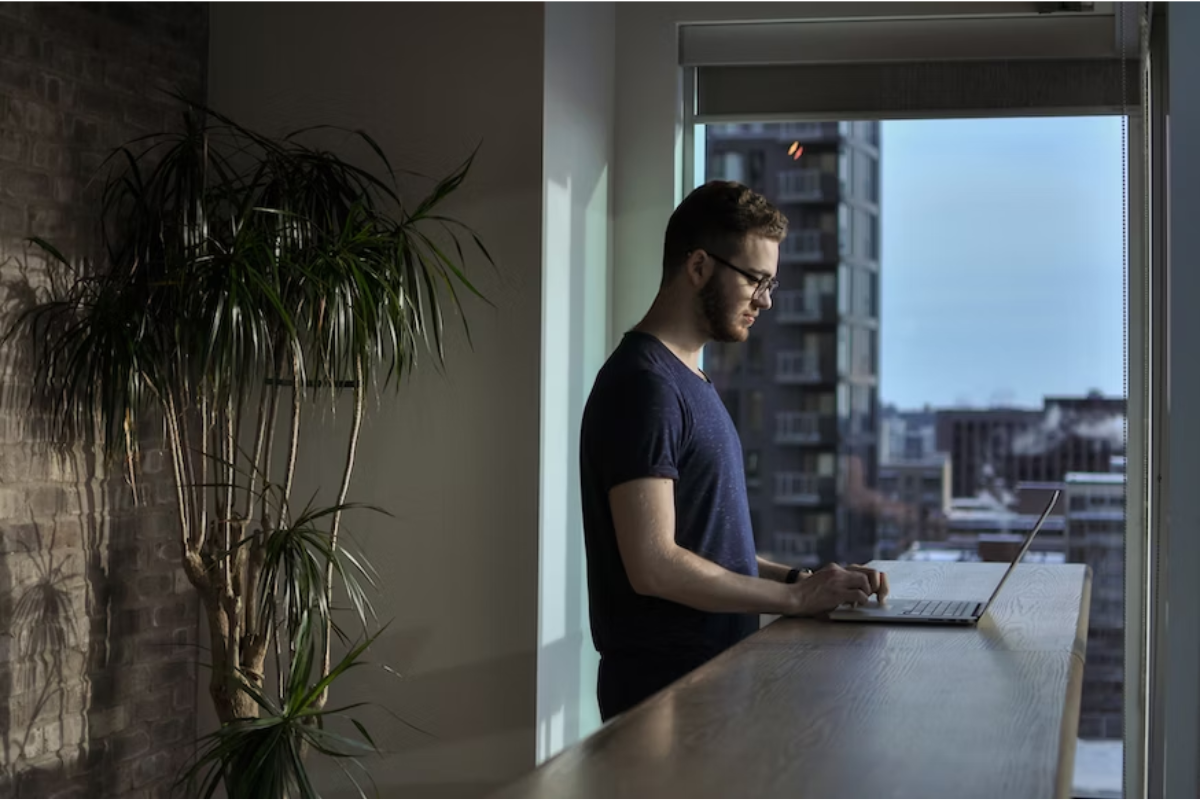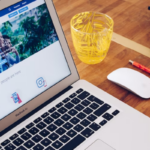Are you interested in creating a Facebook group?
Whether you want to connect with like-minded individuals, promote a business or organization, or simply share your passion with others, Facebook groups can be a great way to build a community and engage with people from all over the world, but how to create a group on Facebook?
With over 1.8 billion people using Facebook groups, it’s no wonder that they have become an essential part of the platform.
Creating a Facebook group is a simple process that can be done in just a few steps.
First, you need to decide what type of group you want to create and choose a name that reflects its purpose.
Then, you will need to select the privacy settings and decide whether you want the group to be public or private.
Finally, you can customize your group by adding a cover photo and description, and inviting members to join.
In this article, we will walk you through the process of creating a Facebook group step-by-step, so you can get started building your own community today.
Post Contents
- 1 Understanding Facebook Groups
- 2 How to Create a Group on Facebook
- 3 Adding Members to Your Group
- 4 Customizing Your Facebook Group
- 5 Admin Roles and Responsibilities
- 6 Understanding Group Settings
- 7 Engaging with Your Group
- 8 Promoting Your Facebook Group
- 9 Understanding Group Insights
- 10 Benefits of Facebook Groups
- 11 Key Takeaways
Understanding Facebook Groups

If you’re new to Facebook, you might be wondering what Facebook Groups are all about.
Simply put, a Facebook Group is a community of people who share a common interest, goal, or activity.
In a Facebook Group, members can post updates, share photos and videos, and communicate with each other through comments and private messages.
There are different types of Facebook Groups, including public, private, and secret groups.
Public groups are open to anyone on Facebook, while private groups require approval to join.
Secret groups are the most exclusive, and only members can see the group’s content.
When you create a Facebook Group, you have the option to choose from different privacy settings, including public, closed, and secret.
Public groups are visible to anyone on Facebook, while closed groups require approval to join.
Secret groups are the most exclusive, and only members can see the group’s content.
Facebook Groups can be used for a variety of purposes, including:
- Clubs and organizations
- Support groups
- Business networking
- Event planning
- Hobby groups
In a Facebook Group, you can create subgroups, events, and polls to engage with your members.
You can also use Facebook’s built-in tools to manage your group’s settings, members, and content.
How to Create a Group on Facebook
Creating a group on Facebook is a great way to bring people together around a shared interest or topic.
Here’s how to create a group on Facebook in just a few simple steps.
Choose a Group Name
The first step in creating a group on Facebook is to choose a name for your group.
Your group name should be something that accurately reflects the purpose of your group and is easy for people to remember.
Make sure you choose a name that is not already in use by another group on Facebook.
Select Privacy Settings
Once you have chosen a name for your group, the next step is to select the privacy settings for your group.
There are three privacy options available for groups on Facebook:
- Public: Anyone can see the group, its members, and the posts in the group.
- Closed: Anyone can see the group, but only members can see the posts in the group.
- Secret: Only members can see the group and the posts in the group.
Choose the privacy setting that best suits the needs of your group. If you want your group to be visible to everyone on Facebook, choose “Public.”
If you want your group to be more private, choose “Closed” or “Secret.”
Add a Description
The final step in creating a group on Facebook is to add a description of your group.
Your group description should provide an overview of what your group is about and what members can expect to find in the group.
Be sure to include any rules or guidelines for members to follow.
When creating your group description, keep in mind that it will be visible to anyone who views your group.
Make sure it accurately reflects the purpose of your group and is written in a friendly and welcoming tone.
Adding Members to Your Group

Once your Facebook group is up and running, it’s time to start adding members.
There are a few different ways to do this, depending on your preferences and the nature of your group.
Here are some options to consider:
Adding Friends
One of the easiest ways to add members to your group is by inviting your Facebook friends.
To do this, simply click the “Add Members” button in your group and select “Invite Friends.”
From there, you can choose which friends you want to invite and send them an invitation to join your group.
Adding Members
If you want to add members who are not your Facebook friends, you can do so by sharing a link to your group.
To find the link, click the “Add Members” button in your group and select “Share Link.”
You can then copy the link and share it on your Facebook page, in other groups, or via email or other messaging apps.
Membership Requests
If you want to control who joins your group, you can require that members request to join and be approved by an admin.
To set this up, go to your group settings and select “Manage Membership.”
From there, you can choose who can approve member requests and set up membership questions to help you decide whether or not to approve a member.
No matter how you choose to add members to your group, be sure to make them feel welcome and valued.
Take the time to interact with new members and encourage them to participate in the group.
This will help your group grow and thrive over time.
Customizing Your Facebook Group

Once you have created your Facebook Group, it’s time to customize it to make it more appealing to your members.
Here are some ways to customize your Facebook Group:
Add a Cover Photo
The cover photo is the first thing that people see when they visit your Facebook Group.
It’s important to choose a photo that represents your group’s topic and style.
To add a cover photo, follow these steps:
- Click on the “Edit Group Settings” button located under the group’s cover photo.
- Click on “Change Cover Photo”.
- Choose a photo from your computer or select one from your Facebook photos.
- Adjust the photo position and size if necessary.
- Click on “Save Changes”.
Edit Group Settings
You can customize your group’s settings to control who can join, post, and see your group’s content.
To edit your group’s settings, follow these steps:
- Click on the “Edit Group Settings” button located under the group’s cover photo.
- From here, you can change the group’s name, description, privacy settings, and more.
- Click on “Save” to save any changes you make.
Customize Your Group Icon
Your group icon is the small image that appears next to your group’s name in search results and notifications.
To customize your group icon, follow these steps:
- Click on the “Edit Group Settings” button located under the group’s cover photo.
- Click on “Change Group Icon”.
- Choose a photo from your computer or select one from your Facebook photos.
- Adjust the photo position and size if necessary.
- Click on “Save Changes”.
Add Custom Emojis
You can add custom emojis to your group’s chat to make it more fun and engaging.
To add custom emojis, follow these steps:
- Click on the “Add Emoji” button located in the chat box.
- Click on “Create Emoji”.
- Choose an image from your computer or select one from your Facebook photos.
- Give your emoji a name and click on “Create”.
Customizing your Facebook Group is an important step in building an engaged community.
By adding a cover photo, editing your group settings, customizing your group icon, and adding custom emojis, you can make your group more appealing to your members.
Admin Roles and Responsibilities
When creating a Facebook group, it’s important to assign admins to help manage the group.
Admins have more control over the group than regular members, so it’s important to choose responsible individuals for these roles.
Here are some of the key roles and responsibilities of admins:
Adding and Removing Members
One of the main responsibilities of admins is to add new members to the group and remove members who violate the group’s rules.
Admins can also approve or deny membership requests from potential members.
Moderating Content
Admins are responsible for moderating the content posted in the group to ensure that it follows the group’s rules and guidelines.
This includes removing posts that violate the rules, as well as warning or banning members who repeatedly break the rules.
Managing Group Settings
Admins have access to the group’s settings, which means they can change the group’s name, description, privacy settings, and other important details.
They can also create and manage group events and polls.
Promoting and Demoting Admins
If there are multiple admins in the group, one of the admins can promote or demote other admins as necessary.
This means that if an admin is not fulfilling their responsibilities, they can be demoted to a regular member, while a responsible member can be promoted to an admin.
Understanding Group Settings
Creating a Facebook group is an excellent way to connect with people who share similar interests.
However, before you start inviting people to join your group, it’s essential to understand the various group settings available to you.
Group Settings
When creating a group, you’ll need to configure its settings.
Here’s a quick rundown of what you can expect to see:
- Name and Description: Choose a name that accurately reflects your group’s purpose and add a description that provides more information about what the group is all about.
- Privacy Settings: You have three options when it comes to privacy settings: Public, Closed, and Secret. Public groups are visible to anyone on Facebook and can be joined by anyone. Closed groups are visible to anyone on Facebook, but only members can see the content. Secret groups are invisible to anyone who is not a member.
- Group Type: Facebook offers five different group types: General, Buy and Sell, Parenting, Study Group, and Support Group. Choose the type that best fits your group’s purpose.
Privacy Settings
The privacy settings you choose for your group will determine who can see the content and who can join.
Here’s what you need to know:
- Public: Anyone can see the group, its members, and the content posted within the group. Anyone can join the group.
- Closed: Anyone can see the group and its members, but only members can see the content posted within the group. Anyone can request to join the group, but they must be approved by a group admin.
- Secret: The group is invisible to anyone who is not a member. Only members can see the content posted within the group. Members must be invited to join the group.
Group Type
Choosing the right group type is essential to ensure that your group attracts the right audience.
Here’s a quick overview of the five different group types:
- General: This type of group is suitable for any topic or interest.
- Buy and Sell: This type of group is ideal for buying and selling goods and services.
- Parenting: This type of group is designed for parents to connect and share information about raising children.
- Study Group: This type of group is perfect for students who want to collaborate and share information about a particular subject.
- Support Group: This type of group is ideal for people who want to connect with others who are going through similar experiences.
By understanding the various group settings available to you, you can create a Facebook group that meets your needs and attracts the right audience.
Engaging with Your Group
Once you have created your Facebook group, it’s time to start engaging with your members.
Engaging with your group is important because it helps to build a strong community and encourages members to participate in discussions and share their thoughts.
One way to engage with your group is by creating posts on topics that your members are interested in.
You can ask them questions, share interesting articles or videos, or start discussions on current events.
This will help to keep your group active and encourage members to participate in conversations.
Another way to engage with your group is by encouraging members to share their own content.
You can create a post asking members to share their favorite recipes, photos, or travel tips.
This will help to create a sense of community and encourage members to interact with each other.
You can also use badges or rewards to encourage members to participate in your group.
For example, you can create a badge for members who have contributed the most to the group or who have shared the most interesting content.
This will help to create a sense of competition and encourage members to participate more actively in the group.
Finally, it’s important to keep the content in your group fresh and interesting.
You can do this by sharing new articles or videos, starting new discussions, or creating polls to gather feedback from your members.
By keeping the content fresh and interesting, you’ll encourage members to keep coming back to your group and engaging with each other.
Promoting Your Facebook Group
Congratulations on creating your Facebook group!
Now, it’s time to start promoting it to get more likes and fans.
Here are some tips to help you promote your group:
Leverage Your Personal Network
The first step in promoting your Facebook group is to leverage your personal network.
Share the group with your friends, family, and colleagues.
Ask them to join the group and invite their friends too.
This will help you get the initial traction you need to grow your group.
Use Facebook Ads
Facebook Ads is a powerful tool that can help you reach a wider audience.
You can create ads that target specific demographics, interests, and behaviors.
This will help you get more likes and fans for your group.
Make sure to create engaging ad copy and use eye-catching visuals to grab the attention of your target audience.
Cross-Promote Your Group
Another effective way to promote your Facebook group is to cross-promote it on other social media platforms.
Share the link to your group on Twitter, Instagram, LinkedIn, and other platforms where your target audience is active.
You can also use email marketing to promote your group to your subscribers.
Offer Incentives
Offering incentives is a great way to encourage people to join your Facebook group.
You can offer exclusive content, discounts, or other perks to members who join your group.
This will help you attract more people to your group and keep them engaged.
Engage with Your Members
Finally, it’s important to engage with your members regularly.
Respond to their comments, ask for their feedback, and create polls to get their opinions.
This will help you build a strong community and keep your members engaged.
By following these tips, you can promote your Facebook group and get more likes and fans.
Remember to be consistent and patient, and you’ll see your group grow over time.
Understanding Group Insights
Once you’ve created a Facebook Group, it’s important to understand how it’s performing.
That’s where Group Insights come in.
Group Insights is a powerful tool that provides you with metrics about your community.
Here’s what you need to know about it:
What are Group Insights?
Group Insights is an admin feature that provides you with valuable information about your group.
It helps you track user interaction, member activity, growth, top contributors, and more.
By using Group Insights, you can get a better understanding of how your group is performing and make informed decisions about how to improve it.
How to Access Group Insights
To access Group Insights, you need to be an admin of the group.
Once you’re in the group, click on the “More” tab and select “Group Insights.”
From there, you’ll be able to see all the metrics related to your group.
What Metrics are Available?
Group Insights provides a wealth of information about your group.
Here are some of the most important metrics:
- Member Activity: This metric shows you how active your members are in the group. You can see how many posts, comments, and reactions your group has received over a certain period of time.
- Growth: This metric shows you how much your group has grown over a certain period of time. You can see how many new members have joined and how many members have left.
- Top Contributors: This metric shows you who the most active members are in your group. These are the members who are posting the most, commenting the most, and reacting the most.
- Engagement: This metric shows you how engaged your members are with your group. You can see how many posts, comments, and reactions your group has received per member.
How to Use Group Insights
Once you have access to Group Insights, it’s important to use the information to improve your group.
Here are some tips:
- Identify Top Contributors: Use the Top Contributors metric to find members who are most involved in your group. These members can be great candidates for moderators or admins.
- Track Engagement: Use the Engagement metric to see which posts are getting the most engagement. This can help you create more engaging content in the future.
- Monitor Growth: Use the Growth metric to see how your group is growing over time. If you notice a decline in growth, it may be time to reevaluate your group’s purpose and content.
In conclusion, Group Insights is a valuable tool that can help you improve your Facebook Group.
By understanding the metrics available and how to use them, you can make informed decisions about how to grow and engage your community.
Benefits of Facebook Groups
Facebook Groups are an excellent way to connect with like-minded people, businesses, and communities.
They offer a range of benefits that make them a valuable tool for networking, marketing, and building relationships.
Here are some of the key benefits of creating or joining a Facebook Group:
Connect with Like-Minded People
Facebook Groups are a great way to find and connect with people who share your interests, hobbies, or passions.
Whether you’re a fan of a particular TV show, a sports team, or a cause, there’s likely a Facebook Group out there for you.
By joining these groups, you can meet new people, make friends, and build a community around your shared interests.
Build Relationships
Facebook Groups provide an opportunity to build relationships with people who share your interests or are part of your community.
By engaging with members of your group, you can learn more about them, their interests, and what they care about.
This can help you build stronger relationships and foster a sense of community.
Boost Organic Reach
Facebook Groups can be an effective way to boost your organic reach on the platform.
By creating or joining a group, you can reach a wider audience of people who are interested in your content or products.
This can help you grow your following, increase engagement, and drive traffic to your website or business.
Market Your Business
Facebook Groups can be a powerful marketing tool for businesses of all sizes.
By creating a group for your business, you can connect with your customers, promote your products or services, and build a loyal following.
You can also use groups to gather feedback from your customers, offer exclusive deals or promotions, and build a community around your brand.
Key Takeaways
Creating a Facebook group is an excellent way to build a community around a shared interest or goal.
Here are some key takeaways to keep in mind when creating your group:
- Choose a clear and concise name: Your group’s name should be easy to remember and clearly communicate what the group is about. Avoid using acronyms or overly complicated names that may confuse potential members.
- Set the right privacy settings: Decide whether your group should be public, private, or hidden. Public groups are open to anyone, while private and hidden groups require an invitation or approval to join. Consider your group’s purpose and who you want to invite before choosing a privacy setting.
- Create a welcoming description: Your group’s description should explain what the group is about and what members can expect. Use this space to set expectations and guidelines for behavior within the group.
- Post engaging content regularly: To keep members engaged and active in your group, post content regularly. This could include articles, photos, videos, polls, and more. Encourage members to share their own content as well.
- Moderate the group effectively: As the group’s creator and administrator, it’s your responsibility to moderate discussions and enforce group rules. Be fair and consistent in your moderation, and be willing to address any issues that arise.
By following these key takeaways, you can create a successful Facebook group that fosters community and engagement among its members.






























